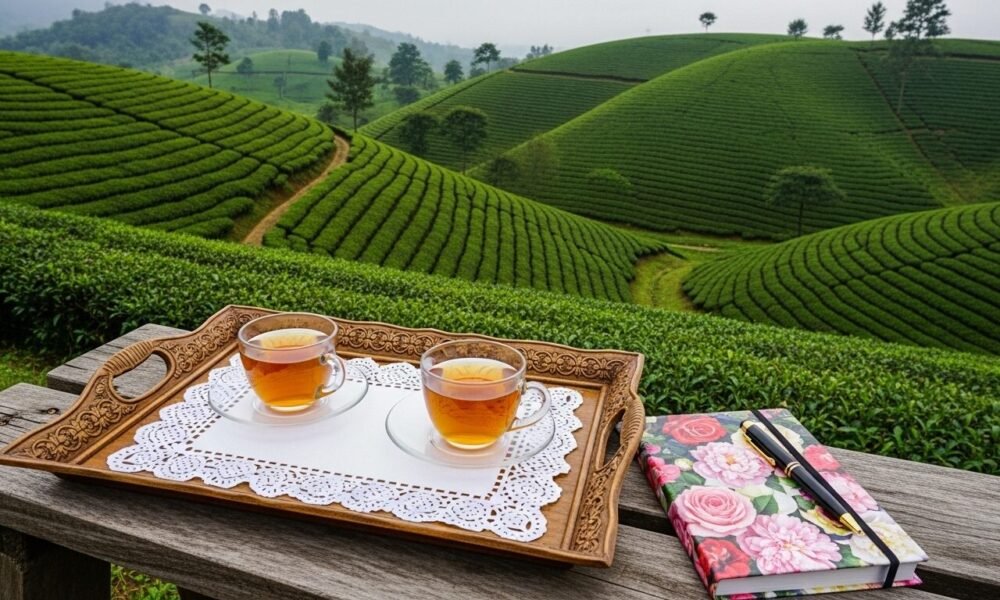
Exploring Tea Tasting Terroir: Unveiling the Essence of Tea and Terroir
Index
Index
Many tea lovers wonder why the same tea type can taste so different from place to place. Tea tasting terroir explains how soil, climate, and location create unique flavors in every cup.
This guide will show you how to spot these special traits when you taste teas from regions like Darjeeling, Assam, or Yunnan.
Key Takeaways
- Terroir in tea refers to how soil, climate, and altitude create unique flavors, similar to wine.
- Tea grown at higher elevations develops more complex flavors because plants grow slower, allowing more time for flavor compounds to develop.
- Assam teas have bold, malty profiles due to hot, humid lowland conditions, while Darjeeling teas offer delicate floral notes from cooler mountain temperatures.
- Dong Fang Mei Ren (Oriental Beauty) tea gets its honey-like sweetness from leafhopper bites, showing how insects can influence tea flavor.
- Trained tea tasters can identify a tea’s origin by detecting specific flavor notes that reveal its growing region’s unique environmental conditions.
The Concept of Terroir in Tea
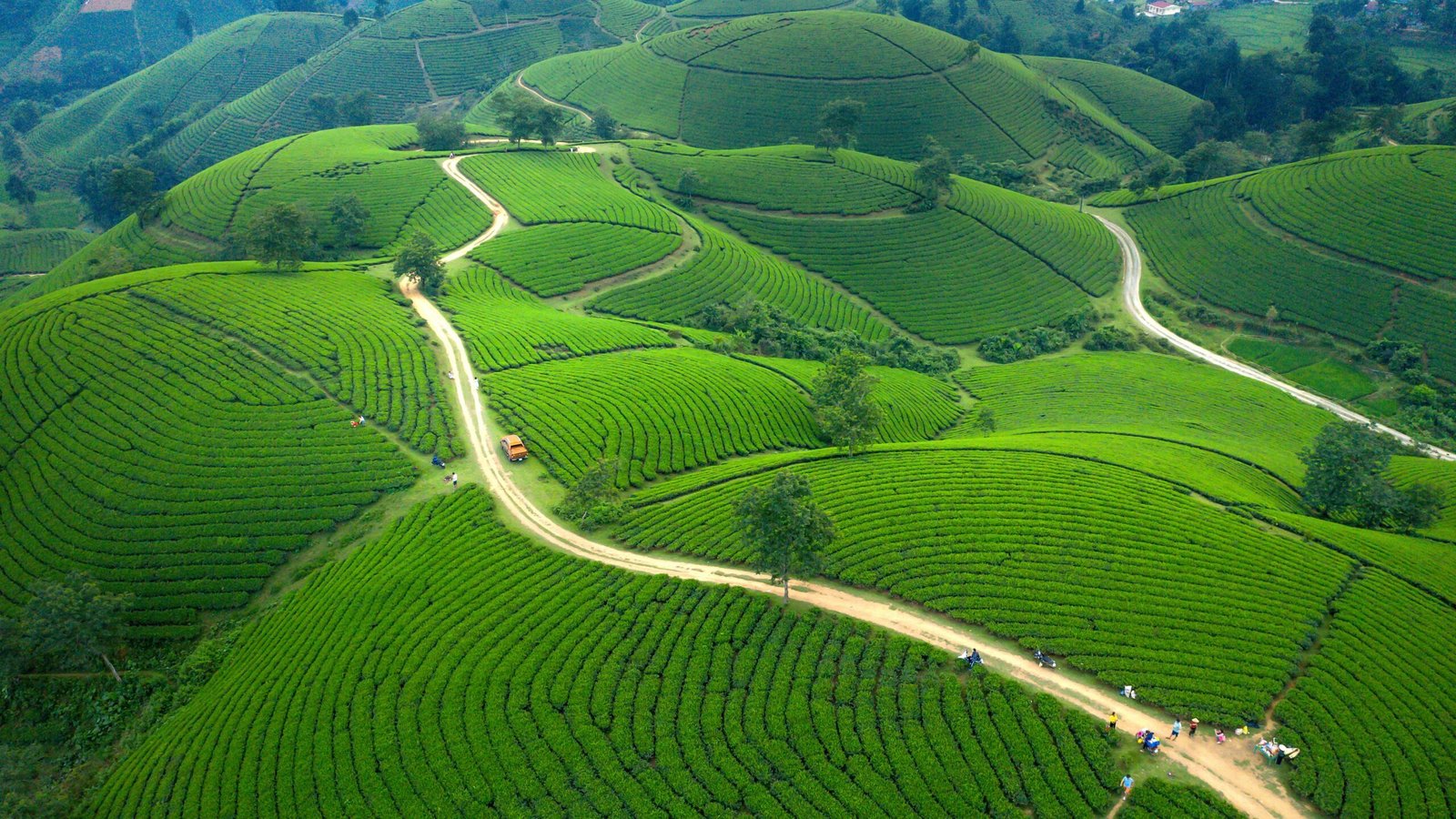
Terroir shapes tea’s taste just as it does for wine, creating a unique flavor fingerprint based on where the tea grows. Each tea garden has its own mix of soil, climate, and altitude that gives its leaves special traits you can taste in your cup.
Defining Terroir: Climate, Topography, and Soil
Tea terroir captures the unique mix of climate, soil, and landscape that gives each tea its special taste. Climate plays a major role in how tea leaves grow, with factors like rain, sun, and humidity shaping flavor profiles.
The soil where tea plants grow must be acidic with a pH between 4.5 and 5.5 for best results. Famous regions like Wuyi Mountains have rocky soil rich in minerals that create the distinct taste notes in their oolong teas.
These natural elements work together to create the “taste of place” that tea lovers can detect in each cup.
Altitude adds another key piece to the terroir puzzle. Tea grown at high mountain sites often develops more complex flavors and stronger essential oils. The slow growth at these heights lets the leaves build up more compounds that affect taste.
Darjeeling teas from India show this clearly with their prized muscatel notes that come from high elevation gardens. Topography also matters as slopes affect drainage and sun exposure.
Tea plants need good drainage to thrive, which is why many quality tea gardens sit on hillsides rather than flat land. The land’s shape, soil makeup, and weather patterns form a unique fingerprint that marks each regional tea variety.
The Role of Altitude in Flavor Development
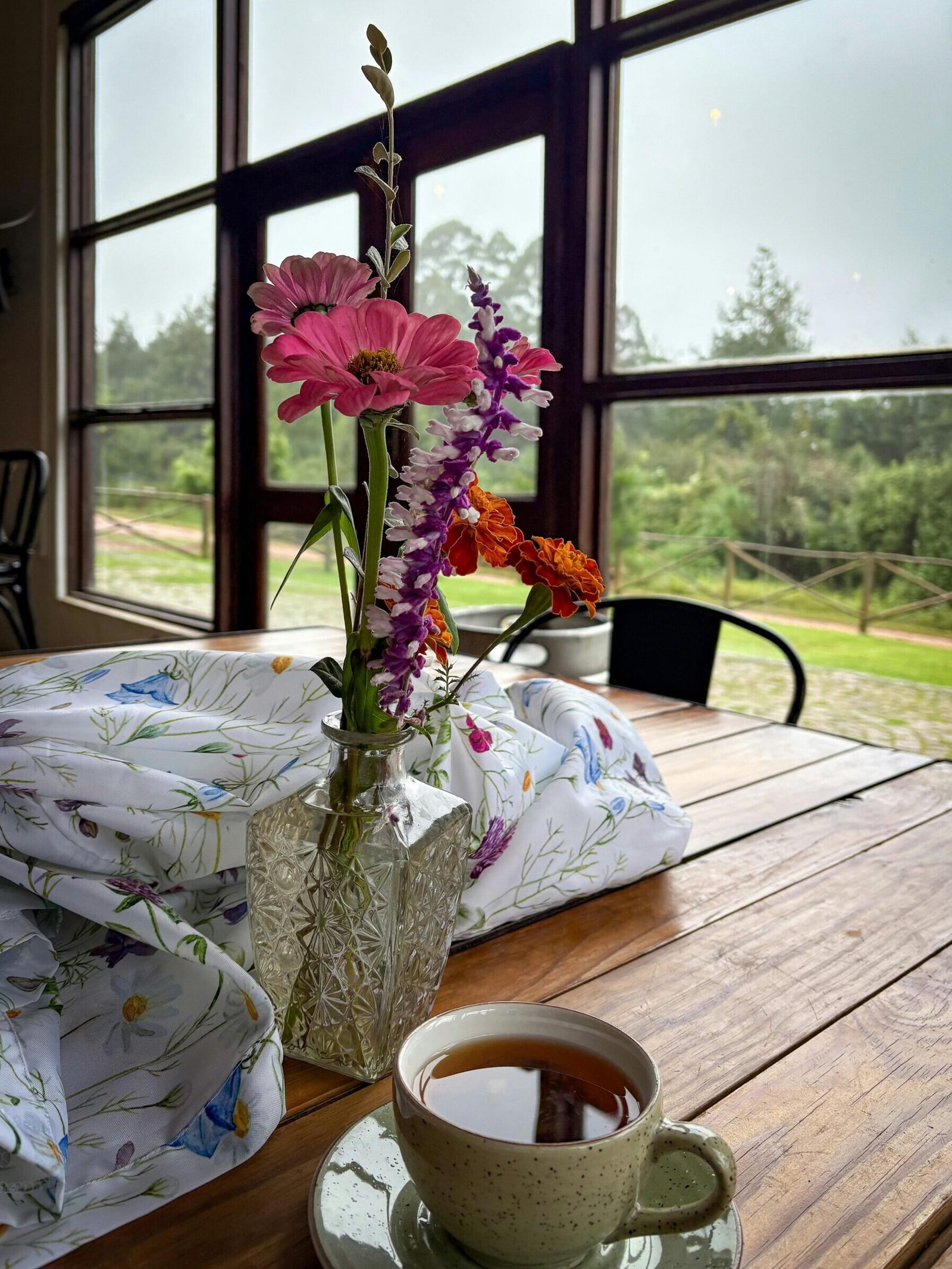
Altitude plays a crucial role in tea flavor development through its direct impact on growth rates. Tea plants at higher elevations grow more slowly due to cooler temperatures, allowing more time for complex flavor compounds to develop within each leaf.
This slower growth creates teas with refined taste profiles that often feature delicate floral notes and distinctive characteristics. In Darjeeling, India, tea gardens sitting at high altitudes produce leaves with their famous muscatel flavors—a direct result of the region’s elevation and cool climate conditions.
Mountain-grown teas differ greatly from their lowland cousins in both taste and appearance. Higher altitudes affect flavor and the physical structure of tea leaves. The size and shape of leaves change based on elevation factors, which ultimately influences how the brewed tea feels in your mouth.
Rainfall patterns at various heights further modify these characteristics. Tea enthusiasts prize these altitude-specific qualities, making elevation an essential element of tea terroir that serious drinkers learn to recognize in their cups.
Impact of Climatic Conditions
Climate shapes the soul of tea leaves from field to cup. Regional weather patterns create distinct flavor profiles that tell the story of each tea’s birthplace.
How Regional Climates Shape Tea Profiles
Regional weather patterns create distinct tea flavors across growing areas. In Darjeeling, cooler mountain temperatures produce teas with delicate floral notes that dance on your tongue.
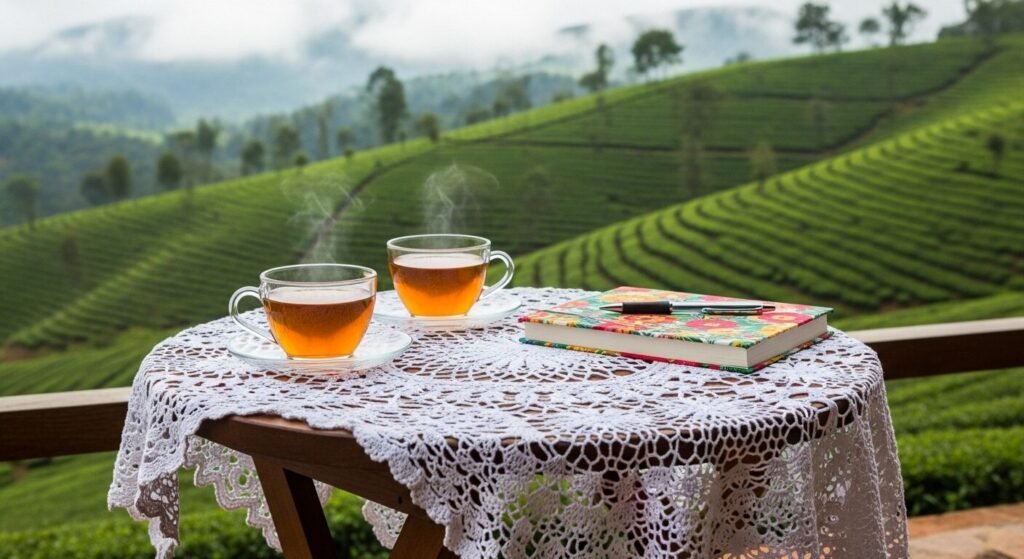
Contrast this with Assam teas, which develop bold, malty profiles thanks to the warm, humid valley conditions. These differences show up clearly in your cup. Drought-affected regions yield teas with earthier, more concentrated flavors as tea plants struggle with limited moisture.
Temperature and humidity levels play major roles in flavor development. Tropical regions with high heat and moisture often produce teas with sweet, fruity characteristics. Japanese teas like Gyokuro gain their sweet, delicate flavors from growing in shade, which reduces photosynthesis and changes the leaf chemistry.
The soil composition further impacts these profiles, with volcanic soils adding mineral notes to many specialty teas. Next, we’ll examine specific case studies from Assam and Darjeeling to better understand these climate effects.
Case Studies: Assam and Darjeeling
Assam and Darjeeling represent two distinct tea terroirs within India that showcase how geography shapes flavor. These regions produce teas with unique profiles due to their specific growing conditions.
Geographic and Environmental Factors
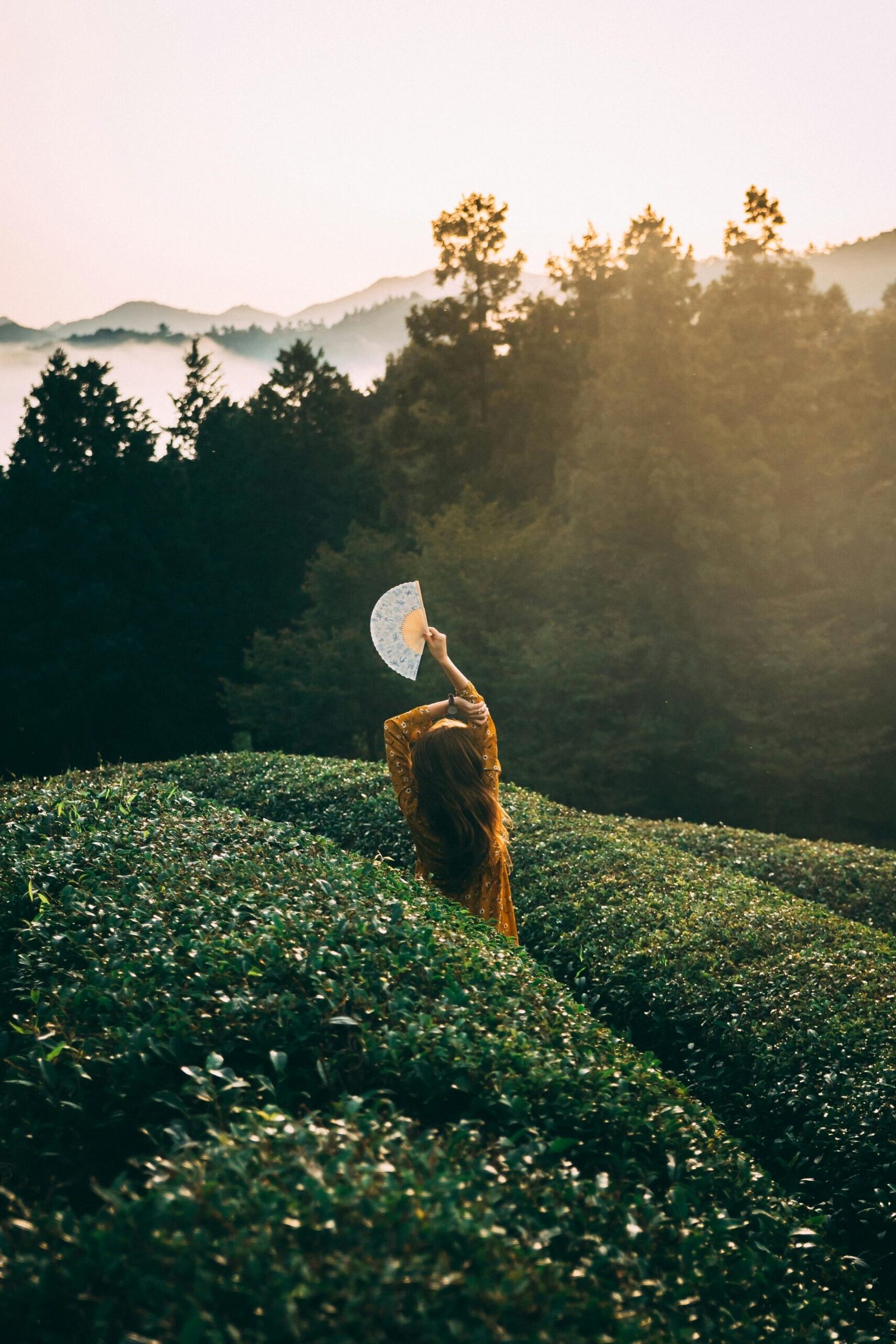
Altitude and Location
- Darjeeling sits at high elevations in the foothills of the Himalayas (6,000+ feet/1,829+ meters above sea level), creating stress on tea plants that develops complex flavors. The muscatel and floral notes come from this unique mountain ecosystem.
- Assam tea grows in the lowland plains of northeast India where hot, humid weather creates bold, malty flavors. The soil in this region contains rich minerals that give Assam tea its strong body and brisk character.
Climate and Weather Patterns
- Climate variability affects Darjeeling tea production significantly, with seasonal changes creating “flushes” of different flavor profiles. First flush teas from spring have light, floral qualities while second flush teas develop the famous muscatel grape-like taste.
- Rainfall patterns shape tea growth cycles, with Assam receiving heavy monsoon rains that fuel rapid leaf development. This quick growth contributes to Assam’s full-bodied character and malty notes.
- Sunlight exposure varies between these regions, affecting the chemical makeup of the leaves. Darjeeling’s misty mountains filter sunlight differently than Assam’s open plains, changing how flavor compounds form.
Growing Conditions and Processing
Soil and Terrain
- Soil composition differs dramatically between these regions, with Assam’s fertile loam supporting vigorous growth. Darjeeling’s rocky, well-drained mountain soil stresses plants in ways that concentrate flavor compounds.
Production Methods
- Tea processing techniques evolved differently in each region to highlight their natural characteristics. Assam teas undergo full oxidation to enhance their robust qualities, while Darjeeling processing often stops earlier to preserve delicate notes.
- Altitude creates the most striking difference in processing needs. The elevation of Darjeeling gardens (6,000+ feet/1,829+ meters) slows growth and intensifies flavors compared to Assam’s lower elevation gardens, requiring adapted processing methods.
Cultivation Practices and Their Influence
Tea farmers choose specific Camellia sinensis varieties to match their local growing conditions. These choices shape the final taste in your cup, just as grape varieties affect wine.
The Significance of Camellia Sinensis Cultivars
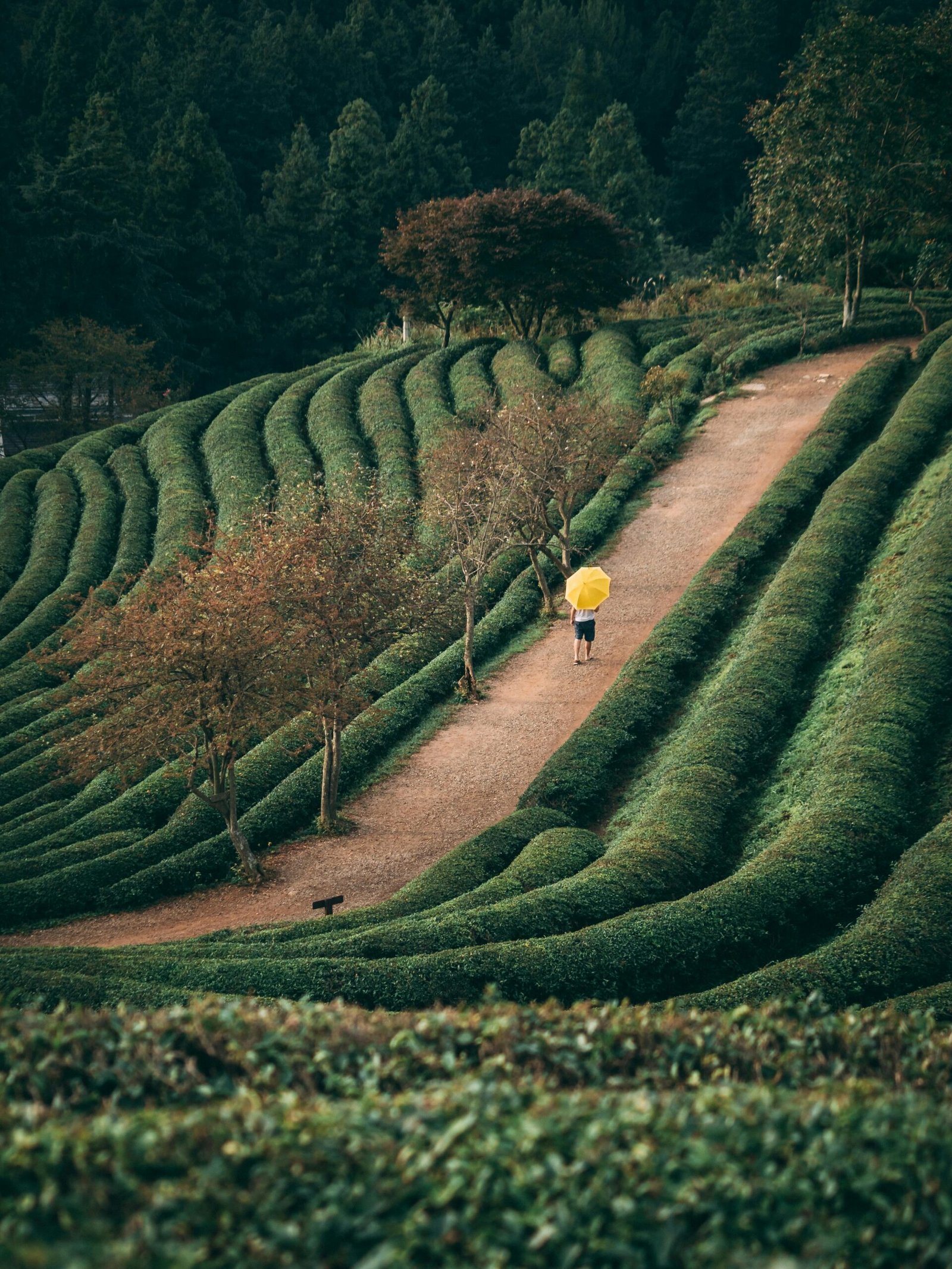
Camellia sinensis plants come in many forms, each with its own flavor profile. These tea plant sub-species, called cultivars, result from human selection rather than natural variation.
Tea growers choose specific cultivars based on how well they adapt to local soil, climate, and altitude. This careful selection process helps create the distinct taste found in black tea from Fujian or green tea from Zhejiang.
Different tea cultivars develop through two main paths: natural seed propagation or cloning techniques. Each method produces plants with unique traits that respond differently to their growing environment.
For example, tea bushes grown at high elevations often develop more complex flavors than those from lower regions. The interaction between plant genetics and terroir creates the special character that tea masters can identify in quality loose leaf teas from around the world.
The Interplay of Cultivar and Terroir
Beyond the tea plant varieties, we find a fascinating dance between genetics and environment. Each tea cultivar responds uniquely to its growing conditions, creating distinct flavor profiles that tea lovers can taste.
The mineral content in soil directly shapes the chemical makeup of tea leaves, while local spring water adds another layer to the taste equation. In Yunnan, pu’er tea trees growing in iron-rich soil develop deeper, more robust flavors than their counterparts in other regions.
Tea plants at higher elevations often yield sweeter notes in the cup. This explains why Darjeeling teas from the mountains of India differ so greatly from Assam teas grown in lowland areas.
The surrounding ecosystem matters too – nearby flowers, trees, and even insects contribute to the tea’s aromatic qualities. Feng Qing black tea from Yunnan absorbs the scents of its forest neighbors, while Taiwan’s Dong Fang Mei Ren (Oriental Beauty) develops honey notes from leafhopper interactions.
These environmental factors work together with the plant’s genetics to create teas that truly reflect their birthplace.
Unique Cultivation Example: Dong Fang Mei Ren and Leafhopper Interaction
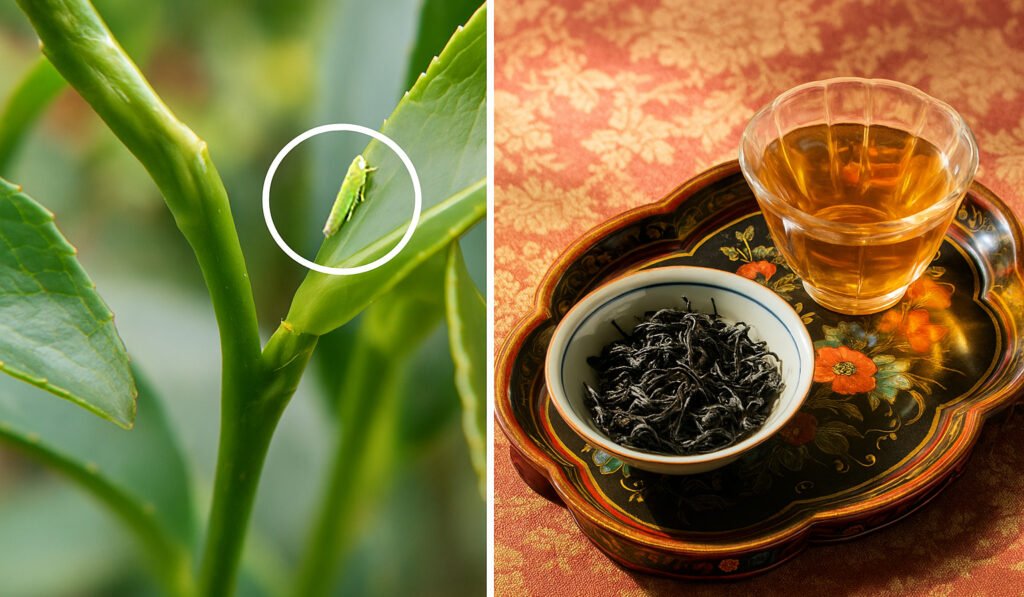
The relationship between cultivars and terroir creates magic in the tea world, but some teas take this connection to another level. Dong Fang Mei Ren, also called Oriental Beauty or Bai Hao oolong tea, stands as a perfect example of this special bond.
This unique tea depends on tiny insects called green leafhoppers (Jacobiasca Formosana) that bite the tea leaves. These bites trigger the tea plant to produce chemicals that change the flavor of the tea, adding sweet, honey-like notes to the final cup.
Tea farmers who make Dong Fang Mei Ren must avoid using bug sprays on their plants. They welcome these insects instead of fighting them off. The leafhopper bites cause the leaves to start turning brown at the edges, which signals they’re ready for harvest.
After careful processing, the finished tea offers fruity and floral aromas with hints of honey and wood. This tea shows how nature’s small details can create big differences in tea taste, proving that exceptional terroir includes more than just soil and weather.
Discerning Influences Through Tea Tasting
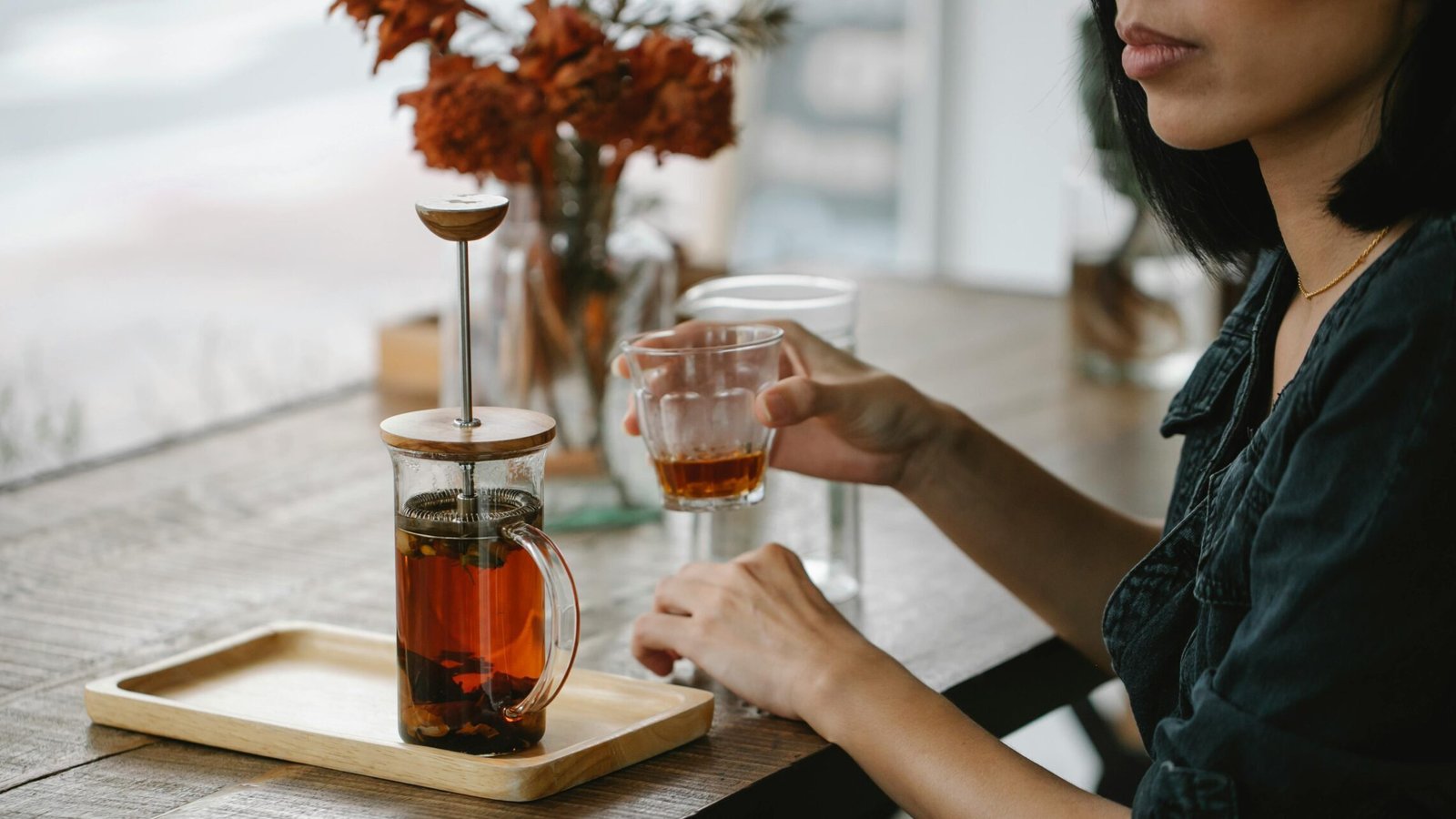
Tea tasting reveals the hidden stories of where and how tea grows. Each sip offers clues about soil, climate, and farming methods that shape a tea’s character.
Identifying Terroir and Cultivation Signatures
Tea experts can spot where a tea comes from by its taste alone. The unique mix of soil, climate, and growing methods leaves distinct marks in each cup that trained palates can detect.
Terroir Indicators in Tea
Flavor and Chemical Composition

- Flavor notes reveal altitude effects in tea leaves. High-grown teas from Nepal and Darjeeling show more complex tastes because plants grow slower at higher elevations.
- Soil composition creates specific mineral traces in the final brew. Clay-rich soils in Yunnan give puer tea its earthy depth, while volcanic soils in Japan add sweet umami notes to matcha.
- Aroma compounds vary based on local plant life. Teas grown near wild roses in Shandong absorb floral scents that become part of their chemical signature.
- Insect interaction creates unique flavor profiles in certain regions. Taiwan’s Dong Fang Mei Ren (Oriental Beauty) gains its honey-like sweetness from leafhopper bites, a cultivation signature impossible to replicate elsewhere.
Environmental and Growing Factors
- Rainfall patterns affect the strength and body of tea. Assam teas gain their bold, malty profile from heavy monsoon rains, unlike the lighter Nilgiri teas from drier regions.
- Seasonal harvest timing stamps each tea with time-specific markers. Spring white teas carry fresh, delicate notes that differ greatly from autumn harvests from the same bushes.
- Cultivar selection matched to terrain produces region-specific qualities. Different varieties of Camellia sinensis thrive in different soils, with each pairing creating distinct flavor compounds.
Identification and Processing
Visual and Physical Markers
- Leaf size and shape help pinpoint growing regions. The flat, sword-like leaves of Longjing tea signal its Zhejiang origin, while the tiny, curled leaves point to Anhui’s mountainous terrain.
Production and Tasting Methods
- Processing adaptations to local climate affect final taste. Sri Lankan teas undergo specific withering techniques developed for their tropical conditions, creating a bright, clean cup profile.
- Tasting sets organized by region help train the palate to recognize terroir markers. Comparing teas from China, Kenya, and India side by side highlights the differences between regions.
The Taster’s Role in Understanding Provenance
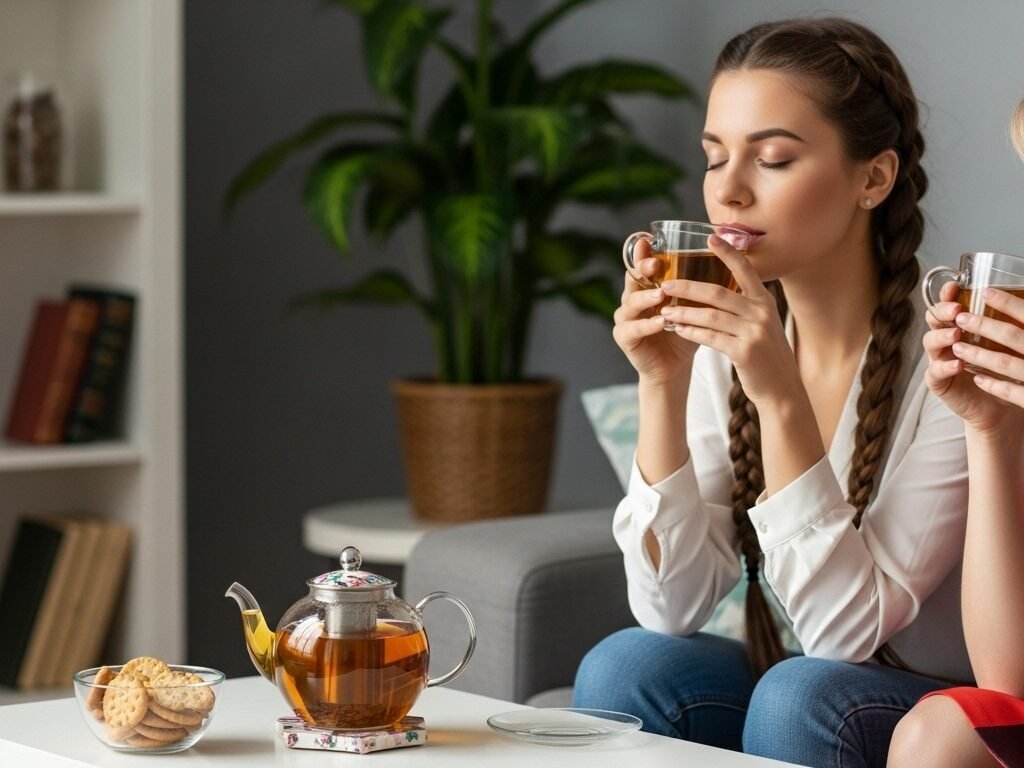
Tea tasters serve as vital bridges between terroir and consumers. They train their senses to detect subtle flavor notes that reveal a tea’s origin story. The taster must learn to identify how altitude affects astringency, how soil types influence mineral notes, and how climate shapes sweetness.
This skill develops through practice and exposure to teas from different regions of India, China, and beyond.
Professional tasters use specific techniques to spot terroir markers in each cup. They slurp tea loudly to spread it across taste buds and note how flavors change from first sip to finish.
A taster might recognize the muscatel character unique to Darjeeling or the rich malty profile of Assam teas grown at lower elevations. These distinctions help tea drinkers make informed choices based on terroir characteristics they prefer.
The concept of terroir extends beyond just taste to include the complete sensory experience that connects us to the land where our favorite teas grow.
Conclusion
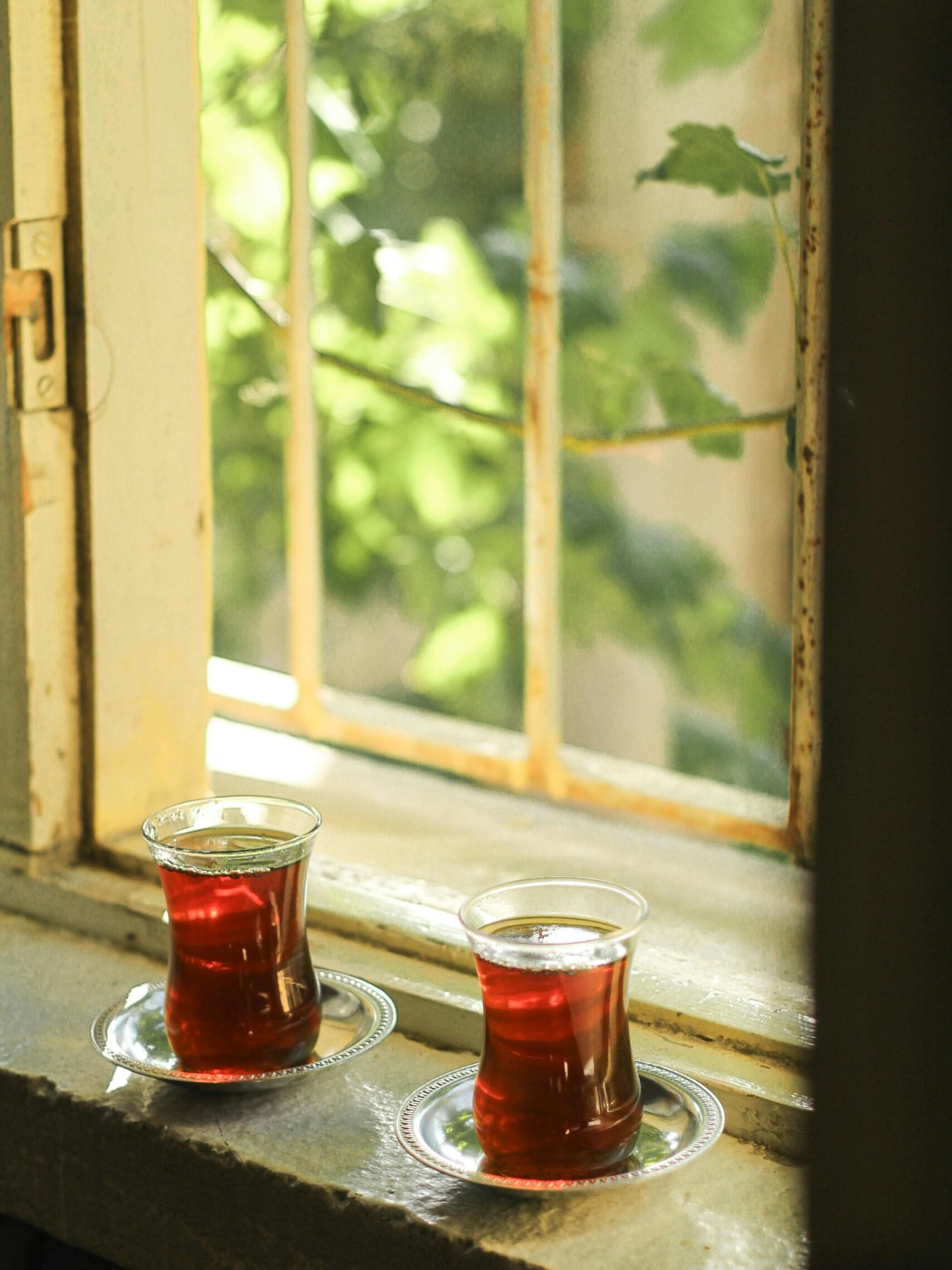
Terroir stamps each tea with a unique flavor signature that speaks of its birthplace. From high mountain Darjeeling to tropical Assam valleys, these growing regions create distinct taste profiles through their soil, climate, and altitude.
The careful work of farmers adds another layer, as they select cultivars and processing methods that best express their land’s character. Tea tasting becomes a journey across landscapes, where each sip reveals the story of sun-drenched hillsides or misty mountains.
Next time you drink tea, pause to notice these subtle differences—they connect you to distant places and ancient traditions that continue to shape what fills your cup.
FAQs
1. What is terroir and how does it affect the flavor of tea?
Terroir is the reason tea tastes unique from place to place. It includes the quality of the soil, climate, and growing conditions that influence the taste of tea. The chemical composition of tea leaves changes based on where they grow, creating distinct aromas and flavors in each cup.
2. How do different regions produce unique tea characteristics?
Different regions of India, China, and other countries cultivate tea with special traits due to their unique soil conditions. The world of wine has long celebrated terroir, but tea culture has valued these regional differences since ancient times. Places like Menghai and various prefectures in Japan produce teas that show their origin through taste.
3. Can you taste terroir in all types of tea?
You can taste terroir most clearly in high quality tea that uses minimal processing techniques. Sheng and other pure teas reveal their place of origin better than heavily processed varieties. The vegetation, climate, and soil all contribute to the unique characteristics that true tea lovers seek.
4. Does processing affect how we experience tea terroir?
Yes. How tea leaves are processed greatly impacts how much terroir you can taste. Different processing techniques can either highlight or mask the natural flavors from the soil and growing conditions. Some methods preserve the original character while others create new flavor profiles.
5. Why do teas from the same farm taste consistent season after season?
The consistent quality of the soil and local growing conditions helps maintain flavor profiles year after year. Skilled farmers in places like Japan, India and China understand how to work with their land to produce reliable results. This consistency is similar to what we see in fine wine, cheese, and other agricultural products.
6. How can beginners start appreciating tea terroir?
Try tasting different teas from various regions side by side. Notice how teas from the tropics differ from those grown at high elevations. The amount of tea you use and how you brew it matters too. Many tea blogs and culture guides can help you learn to identify the subtle differences that make each origin special.
References
- https://info.artoftea.com/what-is-a-tea-terroir-and-what-does-it-mean-for-flavor
- https://www.vinhood.com/en/magazine-en/te-e-terroir/
- https://uphaartea.in/blogs/news/tea-and-terroir-exploring-the-impact-of-terroir-on-tea-flavor
- https://teatheworld.com/blog/the-impact-of-climate-on-tea-flavor-profiles/?srsltid=AfmBOorGMOpodk8Tod46c4wINbVOh5ouGto99n2QJBdu80wjEgAu_4PM (2025-01-27)
- https://www.essencional.com/en/posts/tasting-the-leaves-exploring-tea-culture-and-its-influence-on-modern-perfumery-part-2/
- https://www.avongrovetea.com/post/the-terroir-of-darjeeling-how-geography-impacts-tea-flavor (2023-11-16)
- https://www.mdpi.com/2073-4433/16/1/1
- https://siamteas.com/tea-abc-tea-school/tea-cultivar-tea-plant-variety/
- https://substack.com/home/post/p-159364910?utm_campaign=post&utm_medium=web
- https://verdanttea.com/terroir-and-its-influence-on-the-flavor-of-tea-part-one?srsltid=AfmBOopLBSSoe7C7QeivYGSy8T29GMBpdlGIIfmdDwegZhps06cqi8GA
- https://www.oriarm.com/blog/post/dong-fang-mei-ren-tea-a-famous-taiwan-oolong-tea?srsltid=AfmBOoo-PPMB7mWXeGleH-ZOgFVr4zIDYg6PWRCoYo6F_3S2PU5dcJBy (2019-07-20)
- https://verdanttea.com/terroir-and-its-influence-on-the-flavor-of-tea-part-one?srsltid=AfmBOoqQCKnZQHALUU5QyhxBCF4hFPzXzmgQ1CwCxwbS7jVUaxNlx37y







